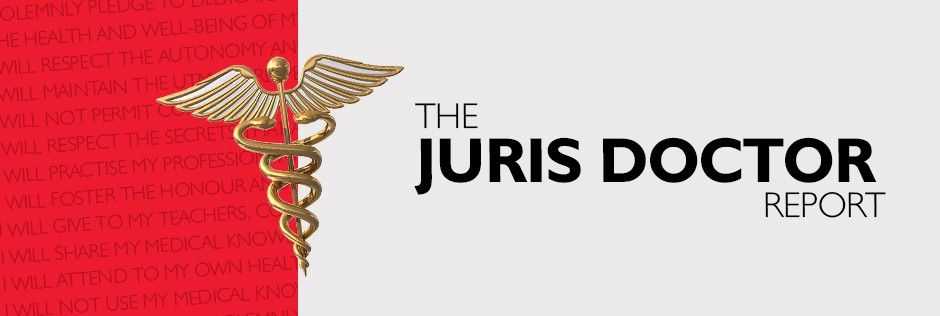For more information about this blog post, please contact Khaled J. Klele, Latoya Caprice Dawkins, or Ryan M. Magee.
Ambulatory Surgery Center Prospective Payment System
84 FR 61142 – Final Rule with Comment Period – This final rule with comment period revises the Medicare hospital outpatient prospective payment system (OPPS) and the Medicare ambulatory surgical center (ASC) payment system for Calendar Year (CY) 2020. On average for all covered procedures in ASCs, payment rates went up by 2.6%. CMS finalized the addition of eight codes to the ASC-payable list, including total knee arthroplasty (TKA), a mosaicplasty procedure, as well as six coronary intervention procedures, which were previously not payable in the ASC setting. Importantly, CMS plans to continue using the hospital market basket to update ASC payments for CY 2020 through CY 2023. This final rule also refines the requirements for the Hospital Outpatient Quality Reporting (OQR) Program and the ASC Quality Reporting (ASCQR) Program.
Controversially, however, CMS will move forward with site-neutral payments for doctor's visits, even though a federal judge ruled against the policy earlier this year. With this change, CMS will pay doctors the same amount for a basic visit whether it takes place in a hospital outpatient facility or a regular doctor’s office. CMS estimates that the change will cut copays for people on Medicare and slash federal spending by $800 million in 2020. This part of the final rule will certainly engender litigation.
In addition, the rule reduces drug payments by approximately $1.6 billion to safety-net hospitals under the 340B program by changing the formula it uses to calculate reimbursements.
This final rule becomes effective January 1, 2020.
Final Rule on the 2020 Physician Fee Schedule
84 FR 62568 – Final Rule – CMS issued this final rule for the 2020 Physician Fee Schedule, but it does more than merely update rates. This rule updates the Evaluation and Management (E/M) documentation and coding framework for the first time in over two decades, and CMS anticipates this will save clinicians 2.3 million hours per year in burden reduction to address burnout from administrative tasks. Consistent with the changes adopted by the AMA Current Procedural Terminology Editorial Panel for office/outpatient E/M visits, the CPT coding changes retain five levels of coding for established patients, reduce the number of levels to four for office/outpatient E/M visits for new patients, and revise the code definitions. The CPT code changes also allow clinicians to choose the E/M visit level based on either medical decision making or time. According to CMS, these updates will allow clinicians to spend less time on documenting visits and more time on treating patients. These changes will go into effect starting 2021.
The final rule also defers the physician supervision requirement for physician assistants (PA) to allow them to practice more broadly in accordance with state law, and relaxes the medical record documentation policy so that physicians, PAs, and advanced practice registered nurses can review and verify (sign and date), rather than re-documenting, notes made in the medical record by other providers.
In addition, the final rule implements provisions of the Substance Use Disorder Prevention that Promotes Opioid Recovery and Treatment for Patients and Communities (SUPPORT) Act that established a new Medicare Part B benefit for opioid use disorder treatment services, including medication-assisted treatment, furnished by opioid treatment programs.
The rule also changes the Quality Payment Program, which provides clinicians with two paths of participation: through Advanced Alternative Payment Models and the Merit-based Incentive Payment System (MIPS). This rule calls for the creation of a new framework—MIPS Value Pathways (MVPs)—that will be developed with stakeholder input and will apply beginning in the 2021 performance year. Instead of requiring clinicians to report on measures and activities across the multiple performance categories (quality, cost, promoting interoperability, and improvement activities), the MVP framework will allow clinicians to report on the clinically related, specialty-specific measurement sets that are more relevant to their scope of practice. As a result, clinicians will be held accountable for fewer but more meaningful measures.
Moreover, this final rule expands those individuals and entities that can rely on OIG Advisory Opinions.
CMS issued a fact sheet regarding the rule, which becomes effective January 1, 2020.
Medicaid Fiscal Accountability Regulation
84 FR 63722 – Proposed – CMS issued this proposed rule to help ensure transparency in Medicaid supplemental payments and crack down on suspect financing arrangements. Supplemental payments are additional payments states make to providers above base reimbursement levels for a particular service. These payments have increased from 9.4% of all other Medicaid payments in Fiscal Year 2010 to 17.5% in Fiscal Year 2017. This rule requires states to report provider-level information on Medicaid supplemental payments instead of the current aggregate reporting. The proposed rule also requires supplemental payment methodologies be sunset after three years, requiring states to seek CMS approval to continue a supplemental payment beyond that point. In addition, the proposed rule establishes new definitions for Medicaid "base" and "supplemental payments," and clarifies other definitions associated with non-federal share financing arrangements and the upper payment limit categories to close potential loopholes.
For example, according to CMS, states have used numerous schemes that are not consistent with federal statute. Some examples include states that generate extra payments for private nursing facilities that enter into arrangements with local governments to bypass tax and donation rules, and the use of a loophole to tax managed care entities 25 times higher for Medicaid business than for similar commercial business. States can then use that tax revenue to generate additional payments, with no commensurate increase in state spending. The proposal looks to address these questionable financing mechanisms by clarifying requirements related to intergovernmental transfers, healthcare-related taxes and donations, and Medicaid disproportionate share hospital payments.
CMS issued a fact sheet to explain the rule. Comments are due on January 17, 2020.




